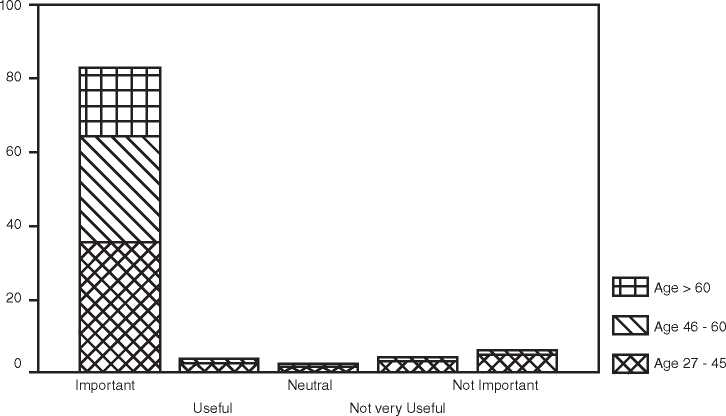are more likely than the younger ones to belong to a village level, church or government
organization. There is no grassroot fishers’ union in Maluku. The government-sponsored
HNSI (All Indonesia Fishermen’s Organization) claims to represent artisanal and small-scale
harvesters as well as large commercial enterprises but in fact, its presence and level of
credibility at the village level are very low.
Changing trends in the fishery can be seen from the fact that whereas 19% of the youngest fishers
said they fished in collaboration with outsiders, only 11% of the mid-age group and none of the
elders fished with outsiders. Target species also change with the generations, with over half of
the youngest fishers being exclusively dependent on pelagic fisheries, while a third of the elders
fish exclusively on inshore reefs. Younger fishers also have a more positive perception of the role
of women in society. Twenty percent believe that women are always involved in community
decision-making, whereas only two out of 33 fishers over 60 share this perception.
The middle age group (45-60 years) is significantly (ANOVA, p=0.002) more likely to want
change in fisheries rules. Although most of them say they enjoy fishing, men in this age
group are also the most likely to change their employment provided they could find something
more profitable or less physically demanding. They are only half as likely to recommend the
fishery as a career for their children, compared to older or younger fishers.
There are also significant differences (chi square test, p=0.03) among the three age classes in
terms of their perception of the role of the community in fisheries management. More than
half of the people in every age group think that the government has most or all responsibility
for fisheries management. However, of the remainder, the fishers under 45 years of age are
much more likely to consider communities as having management responsibility. Younger
fishers do not appear to be always thinking of sasi as the institution of their choice for local
level management. Overall, the majority of fishers (87%) of all ages and in every village
consider sasi to be an important or useful institution. But, whereas the oldest fishers are
unanimous in this opinion, most of those who rate sasi as not very useful or not important are
under 45 years old (Figure 5.2).
%
Fishers

Opinion of Sasi
Figure 5.2. Opinion of sasi provided by fishers of three different age
groups (<46, 46-60 and 60>).
The Fisheries and Fish Markets of Central Maluku 49
More intriguing information
1. TOMOGRAPHIC IMAGE RECONSTRUCTION OF FAN-BEAM PROJECTIONS WITH EQUIDISTANT DETECTORS USING PARTIALLY CONNECTED NEURAL NETWORKS2. An Interview with Thomas J. Sargent
3. NVESTIGATING LEXICAL ACQUISITION PATTERNS: CONTEXT AND COGNITION
4. Fiscal Rules, Fiscal Institutions, and Fiscal Performance
5. Voluntary Teaming and Effort
6. Synchronisation and Differentiation: Two Stages of Coordinative Structure
7. Herman Melville and the Problem of Evil
8. AN IMPROVED 2D OPTICAL FLOW SENSOR FOR MOTION SEGMENTATION
9. Developments and Development Directions of Electronic Trade Platforms in US and European Agri-Food Markets: Impact on Sector Organization
10. The name is absent